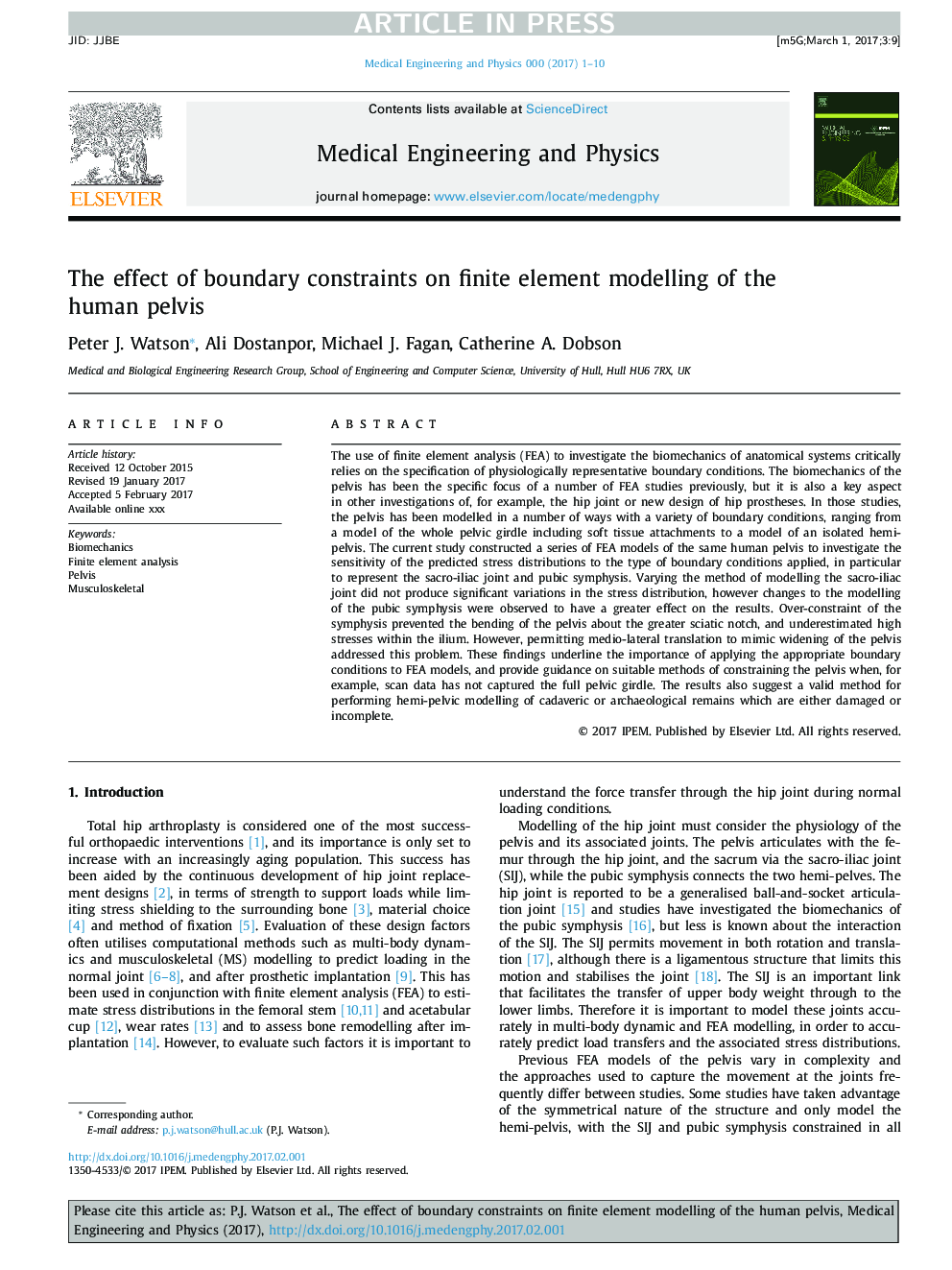| کد مقاله | کد نشریه | سال انتشار | مقاله انگلیسی | نسخه تمام متن |
|---|---|---|---|---|
| 5032666 | 1471131 | 2017 | 10 صفحه PDF | دانلود رایگان |
عنوان انگلیسی مقاله ISI
The effect of boundary constraints on finite element modelling of the human pelvis
ترجمه فارسی عنوان
اثر محدودیت های مرزی بر مدل سازی عناصر محدود لگن انسان
دانلود مقاله + سفارش ترجمه
دانلود مقاله ISI انگلیسی
رایگان برای ایرانیان
کلمات کلیدی
بیومکانیک، تجزیه و تحلیل عنصر محدود، پالیز، اسکلتی عضلانی
موضوعات مرتبط
مهندسی و علوم پایه
سایر رشته های مهندسی
مهندسی پزشکی
چکیده انگلیسی
The use of finite element analysis (FEA) to investigate the biomechanics of anatomical systems critically relies on the specification of physiologically representative boundary conditions. The biomechanics of the pelvis has been the specific focus of a number of FEA studies previously, but it is also a key aspect in other investigations of, for example, the hip joint or new design of hip prostheses. In those studies, the pelvis has been modelled in a number of ways with a variety of boundary conditions, ranging from a model of the whole pelvic girdle including soft tissue attachments to a model of an isolated hemi-pelvis. The current study constructed a series of FEA models of the same human pelvis to investigate the sensitivity of the predicted stress distributions to the type of boundary conditions applied, in particular to represent the sacro-iliac joint and pubic symphysis. Varying the method of modelling the sacro-iliac joint did not produce significant variations in the stress distribution, however changes to the modelling of the pubic symphysis were observed to have a greater effect on the results. Over-constraint of the symphysis prevented the bending of the pelvis about the greater sciatic notch, and underestimated high stresses within the ilium. However, permitting medio-lateral translation to mimic widening of the pelvis addressed this problem. These findings underline the importance of applying the appropriate boundary conditions to FEA models, and provide guidance on suitable methods of constraining the pelvis when, for example, scan data has not captured the full pelvic girdle. The results also suggest a valid method for performing hemi-pelvic modelling of cadaveric or archaeological remains which are either damaged or incomplete.
ناشر
Database: Elsevier - ScienceDirect (ساینس دایرکت)
Journal: Medical Engineering & Physics - Volume 43, May 2017, Pages 48-57
Journal: Medical Engineering & Physics - Volume 43, May 2017, Pages 48-57
نویسندگان
Peter J. Watson, Ali Dostanpor, Michael J. Fagan, Catherine A. Dobson,
